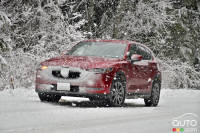Tomorrow Wednesday will begin the second major winter Formula 1 test session in preparation for the 2010 season. All day long, F1 cars do runs in various configurations to collect impressive amount of data. What,s done during these tests?
Auto123.com talked about it with Claude Rouelle, President of OptimumG, a firm of engineering consultancy that is involved in Formula 1, NASCAR, IndyCar, DTM, GT, Australian V8 series and more. Rouelle is a former F1 track engineer.
“These tests are massively important to understand the behavior of the new race car,” said Rouelle.
“Since testing is strictly forbidden the moment the season starts, winter testing is crucial. In a nutshell, the main objective is to understand the behaviour of the car in a rigorously controlled environment,” Rouelle added.
So the first tests are remarkably important.
“To collect reliable and significant data, the driver must not be a variable. He has to be exceptionally consistent. I have worked in the past with certain drivers who were able to produce lap times were all within three tenths of a second.
If the driver can be consistent, the track is certainly not. It is always changing. The engineers must take into account that grip increases as temperature rises and rubber is laid down on the tarmac.
In testing we used to do a check run every two hours. The team uses the basic set-up, four spec tires and for example 80 litres of fuel in the car. The objective is to eliminate as many variables as possible to calculate the changes in grip.
The team then makes series runs with various fuel loads and new tires each time. They’ll do a first run with, let’s say, 20kg of fuel in the tank. A second run may be done with 40kg, then 60, 80, 100 and so on until the car runs on full tanks.
 |
Auto123.com talked about it with Claude Rouelle, President of OptimumG, a firm of engineering consultancy that is involved in Formula 1, NASCAR, IndyCar, DTM, GT, Australian V8 series and more. Rouelle is a former F1 track engineer.
“These tests are massively important to understand the behavior of the new race car,” said Rouelle.
“Since testing is strictly forbidden the moment the season starts, winter testing is crucial. In a nutshell, the main objective is to understand the behaviour of the car in a rigorously controlled environment,” Rouelle added.
So the first tests are remarkably important.
“To collect reliable and significant data, the driver must not be a variable. He has to be exceptionally consistent. I have worked in the past with certain drivers who were able to produce lap times were all within three tenths of a second.
If the driver can be consistent, the track is certainly not. It is always changing. The engineers must take into account that grip increases as temperature rises and rubber is laid down on the tarmac.
In testing we used to do a check run every two hours. The team uses the basic set-up, four spec tires and for example 80 litres of fuel in the car. The objective is to eliminate as many variables as possible to calculate the changes in grip.
The team then makes series runs with various fuel loads and new tires each time. They’ll do a first run with, let’s say, 20kg of fuel in the tank. A second run may be done with 40kg, then 60, 80, 100 and so on until the car runs on full tanks.
 |




















